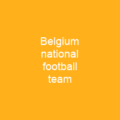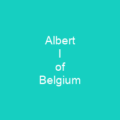Belgium: A Country at the Crossroads of History and Modernity
The Geography and Climate of Belgium
Imagine a small country nestled between France, Germany, Luxembourg, and the Netherlands—this is Belgium. With an area of 30,689 km2, it’s about as big as the state of Maryland in the United States. The climate here is maritime temperate, with significant precipitation throughout the year, averaging between 54-78 mm per month. This makes Belgium a place where rain can be expected almost any time of the year, much like a never-ending story that keeps unfolding.
History and Political Structure
Belgium’s history is as complex as its political structure today. From being part of the Roman Empire to becoming a battleground for various European powers, Belgium has seen it all. The Treaty of Verdun in 843 divided the Carolingian Empire into three kingdoms, setting the stage for medieval political boundaries that still resonate today.
During the 15th century, the Duke of Burgundy took control of Flanders and united much of what is now the Benelux region. This union brought economic and political stability, leading to prosperity and artistic creation. The Habsburg Emperor Charles V increased his influence over these Netherlands, eventually triggering the Eighty Years’ War when the Spanish government’s policies towards Protestantism became too harsh for the Low Countries.
Belgium’s complex federal system is a reflection of its history. It is divided into three highly autonomous regions: Flanders (Dutch-speaking), Wallonia (French-speaking), and the Brussels-Capital Region. The country is also a constitutional monarchy with a parliamentary system, where political power is held by representation of main cultural communities.
Economy and Culture
Belgium’s economy is globalized, highly productive, and service-oriented. It has a strong transport infrastructure and is integrated into Europe. The Belgian Armed Forces have 23,200 active personnel and are subordinate to the Staff Department for Operations and Training of the Ministry of Defense.
Culture in Belgium is rich and diverse. The country has produced notable authors like Emile Verhaeren, Guido Gezelle, and Maurice Maeterlinck, who won the Nobel Prize in Literature in 1911. Belgian cartoon strip industry brought worldwide fame with Franco-Belgian comics such as The Adventures of Tintin by Hergé and Lucky Luke by Morris.
Sports and Traditions
Sports are an integral part of Belgian culture. The most popular sports in Belgium include association football, cycling, tennis, swimming, judo, and basketball. The Belgium national football team has been among the best on the FIFA World Rankings since November 2015, reaching the top spot for the first time.
Belgium is also famous for its beer, chocolate, waffles, French fries, steak and fries, mussels with fries, and many other dishes. The national cuisine is connected to French cuisine but has unique recipes like Flemish Carbonade and Brussels waffles. Belgian gastronomy includes brands of chocolate and pralines like Côte d’Or and Neuhaus.
Conclusion
Belgium, a country with a rich history and complex political structure, continues to thrive in the modern world. From its diverse regions and communities to its strong economy and cultural contributions, Belgium is a unique blend of tradition and innovation. As it faces challenges like climate change and economic disparities, Belgium remains a beacon of unity and progress.

You want to know more about Belgium?
This page is based on the article Belgium published in Wikipedia (retrieved on March 7, 2025) and was automatically summarized using artificial intelligence.







